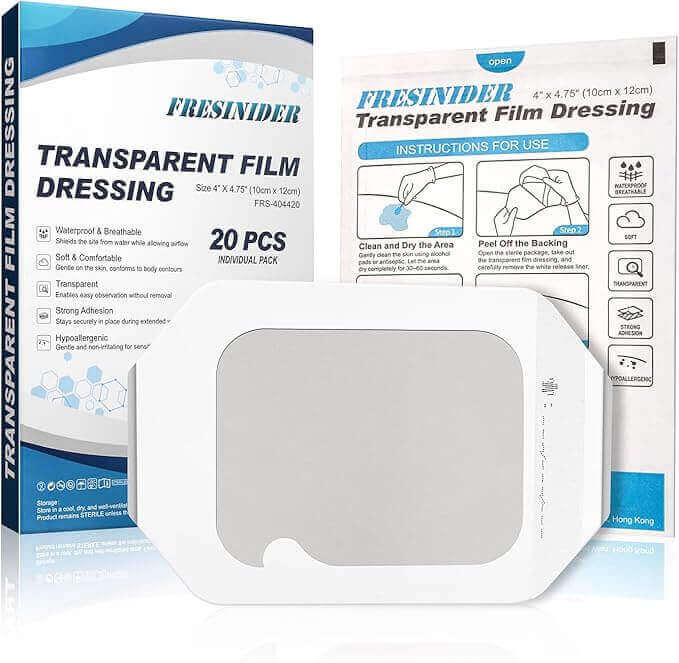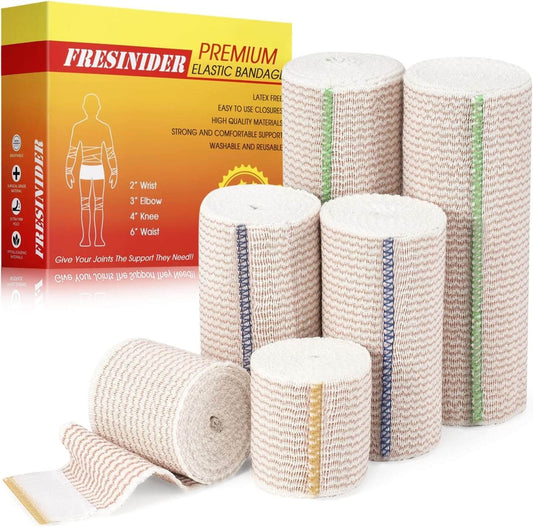For small, clean, low-drainage wounds, the most reliable swim cover is a transparent film dressing sized generously so it seals beyond the wound on all sides. For tiny nicks, a waterproof strip or liquid bandage can work. If a wound is open, draining, or infected, skip the swim and follow clinician advice.
Educational only. For stitches, post-op sites, diabetic/vascular wounds, or signs of infection, follow your clinician’s guidance.
What “waterproof” really means in the pool
- Seal beats material: edges/corners are where failure starts.
- Duration matters: chlorine, salt and motion shorten wear time—keep sessions short and inspect after.
- Hygiene: public waters carry microbes; if you can’t create a full seal, don’t immerse.
The 5 best options (and when to use them)
1) Transparent Film Dressings (best overall seal)
Ultra-thin polyurethane films form a waterproof, bacteria-resistant barrier when intact and well-applied. Choose a size that extends ≥ 2–3 cm (≈1 in) beyond the wound/inner pad; warm-press edges 30–60 seconds to “heat-seal”.
Great for: covering tiny, dry wounds or sealing another small primary dressing for a short swim.
Watch-outs: prolonged occlusion over a damp pad can macerate skin—check after swimming.
New to films? Check out a quick primer on how thin film dressings work for pros/cons and when to use them.
FRESINIDER Transparent Film Dressing
Waterproof & breathable PU film · Individually wrapped
- Waterproof, breathable “second-skin”for showers and daily wear—helps keep sites clean and dry.
- Gentle, latex-free adhesive for sensitive skin; thin film flexes on curves and joints for comfortable wear.
- Individually wrapped; easy on/off—ideal for IV sites, small incisions, tattoos, blisters, and minor cuts.
2) Waterproof Strip Bandages (fastest for tiny cuts)
Look for packaging that explicitly says “100% waterproof” and mentions swimming/shower. These create a 360° seal around a small pad—bring a spare in case edges lift.
3) Hydrocolloid Patches (small, low-drainage spots)
Hydrocolloids support moist healing and protect friction areas (blisters, minor scrapes). For swimming, many users add a transparent film overlay for the session, then remove the film afterward to avoid over-occlusion.

FRESINIDER Hydrocolloid Roll
Cut-to-size hydrocolloid roll · Comfortable, skin-friendly seal for small wounds & blisters
- Helps maintain a moist environment that supports natural healing
- Gentle adhesive for sensitive skin; easy on/off
- Flexible sheet conforms to fingers, heels, and other contours
4) Liquid Bandage (micro-cuts & hangnails)
Brush-on polymers dry to a thin waterproof film that seals tiny, awkward spots where tapes don’t stick well. Apply two thin coats and let fully dry; not for infected, deep, or draining wounds.
5) Silicone Foam + Film (comfort on bony/friction areas)
A soft silicone foam pad cushions and absorbs small exudate with gentle removal. For short swims, add a transparent film on top as a temporary seal, then remove the outer film and inspect after the session.
FRESINIDER Silicone Foam Dressing
Gentle silicone contact layer · Cushioned absorbent pad · Waterproof adhesive border
- Soft silicone lifts cleanly with minimal pain & skin trauma
- Absorbent foam pad cushions bony/friction areas
- Border provides a water-resistant seal for short swims or showers
Quick picks by scenario
- Forearm nick, dry: single transparent film (oversized).
- Heel hot-spot/blister, scant fluid: hydrocolloid + film overlay for the swim; remove overlay afterward.
- Paper cut on finger: waterproof strip or liquid bandage (two coats).
- Shin scrape, low drainage: silicone foam for comfort + film overlay (short swim), then remove overlay.
- Sensor/patch security: transparent film, rounded/oval, with at least 1 in (2–3 cm) border.
How to make films actually stay on (5-step method)
- Wash → dry the skin completely.
- De-oil the perimeter with alcohol; let flash-dry.
- Optional skin-prep: apply a barrier wipe around (not on) the wound to improve adhesion.
- Apply from center out, smooth bubbles, then warm-press edges 30–60 s.
- On joints, overlap two films with staggered seams for flex.

When to skip the swim
- Open, draining, or infected wounds
- Fresh post-op/stitches without surgeon clearance
- High-risk conditions (poor circulation, diabetes, immunosuppression) without clinician advice
- Any time a full waterproof seal can’t be achieved
Buying checklist
- Look for “waterproof” and ideally “swimming/shower” on strip/film packaging.
- Medical-grade transparent film with IFU noting a waterproof barrier.
- Low-allergy adhesives (acrylate or silicone), rounded corners, multiple sizes.
FAQs
Can I just wear a waterproof strip for an hour of laps?
Yes for tiny, dry cuts—choose a swim-stated product and check edges after. Bring a spare.
Is “film over foam” safe?
As a short-term water shield, yes—remove the outer film after and inspect to avoid maceration; silicone foams remove gently.
Ocean vs pool?
Chlorine and motion are tough on adhesives; natural waters add germ exposure—avoid immersion with open wounds.
The takeaway
For most swimmers with small, low-risk wounds, a transparent film dressing (or a true waterproof strip for tiny cuts) offers the best chance of staying sealed in the water. Prep the skin well, oversize the dressing, keep sessions short, and inspect right after. When in doubt—skip the swim and let the skin heal.






